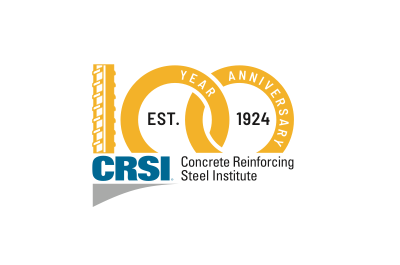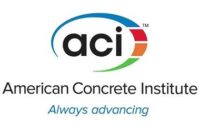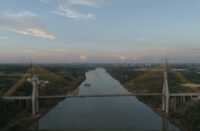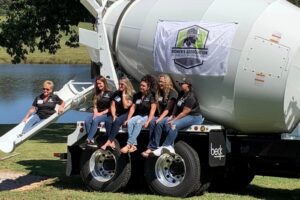 Today, CRSI is the trusted industry resource and standards development organization for steel reinforcement, specifically rebar, in concrete construction. Since its inception, the Institute has continually built upon its involvement and partnerships to help shape the construction industry. Ultimately, it has been the resolve of the membership that has allowed the Institute to traverse both political and economic difficulties over the last century. Through its own technical committees and staff collaboration, CRSI has made significant contributions that created an enviable legacy.
Today, CRSI is the trusted industry resource and standards development organization for steel reinforcement, specifically rebar, in concrete construction. Since its inception, the Institute has continually built upon its involvement and partnerships to help shape the construction industry. Ultimately, it has been the resolve of the membership that has allowed the Institute to traverse both political and economic difficulties over the last century. Through its own technical committees and staff collaboration, CRSI has made significant contributions that created an enviable legacy.
It was the Fall of 1924, when thirty-three owners and executives of twenty-five companies involved in the fabricating and distribution of new billet-steel reinforcing bars gathered at the William Penn Hotel in Pittsburgh, PA. Their intent was to establish a trade association for their industry. The purpose of the new organization was to promote and actively support the use of steel reinforced concrete in construction, as well as to address immediate challenges faced by the industry. The founding members named their new organization the Concrete Reinforcing Steel Institute (CRSI).
Post World War I
Against the post-World War I backdrop, CRSI as a new association went immediately to work. Industrialization was in full swing and among the first orders of business was developing uniform contracts for fabricator members to gain legal authority to ensure they were paid appropriately by their customers. Additional goals, initially, were to standardize the production of the number of grades and sizes of the steel bars that in the United States. They also aimed to tackle the lack of a uniform publication addressing standards and specifications of reinforcing bars.
During the Institute’s infancy, it produced numerous written works that would become major contributions to the reinforced concrete industry. One such publication was the Standard Building Code Provisions for Reinforced Concrete adopted by the American Concrete Institute (ACI) as the ACI Building Code Regulations Covering Reinforced Concrete Construction.
Several years later, a new membership structure that included steel producers (mills) bolstered CRSI as it weathered the Great Depression and World War II. Government intervention and war-time restrictions impacted the work of the membership, however, one constant remained, and it was during this time the Institute would produce the precursors and first editions of publications that would become industry staples. Titles included Reinforced Concrete – A Handbook on Reinforced Concrete Construction Containing Information of Value to the Architect and Engineer (predecessor of the current Manual of Standard Practice), CRSI Design Handbook (now produced as series of design guides), Recommended Practice for Placing Reinforcing Bars (later to become simply Placing Reinforcing Bars), and the Reinforcing Bar Detailing manual were published throughout this period providing industry education and guidance.
The Maturing Industry
As the industry matured, CRSI kept evolving with the changing needs of its members and an environment impacted by technological advancement, demographic changes, and the advent and evolution of new products and related processes. Taller buildings, new highway infrastructure, the evolving building code, and corrosion resistance were all topics of focus and research.
Leading up to and entering the new millennium, CRSI expanded its membership, technical committees, standards and codes representation, and research obligations. New services included the development of industry specific software, plant certification programs, as well as various initiatives to help members conform to a growing number of regulatory frameworks, from health and safety to environmental protection. The Institute embraced government advocacy and developed the necessary documents for its members to comply with requirements in the sustainability movement. It also fostered the research and adoption of high-strength (80 and 100 ksi) reinforcing steel in partnership with the CRSI Foundation, Pankow Foundation, and ACI Foundation. Workforce development and outreach to universities and construction school programs also continue to be key issues within in the Institute and Foundation.
Design Guide – ACI 318 Building Code Requirements for Structural Concrete
More recently, it was during the global pandemic that CRSI’s most recent flagship publication, Design Guide on the ACI 318 Building Code Requirements for Structural Concrete, was released. Shortly thereafter, the group created a series of companion Design Checklists to provide additional time-saving information to designers. Currently, a comprehensive design guide addressing state-of-the-art seismic design requirements is in development for an early 2025 release.
“From member companies who agreed to support our efforts financially, to member employees who volunteered their time on committees, to the dedicated staff who have chosen to devote their professional expertise toward a greater good, each has played a vital role, and will continue to do so. We express our gratitude to all who have made CRSI what it is today.” Danielle Kleinhans, CRSI President and CEO, expresses. “Your dedication, resolve, and insights are our greatest collective strength.”
The future of CRSI
With the observation of the first 100-years quickly approaching, the Institute shows no signs of slowing. CRSI continues to author and influence the standards, codes, and rules from which the construction industry ultimately operates. It also remains steadfast in its commitment to the thousands of professionals who utilize reinforced concrete construction in their careers through education, information, and promotion.
Fanfare officially kicks off at the World of Concrete in 2024, who is coincidentally observing their 50th anniversary. CRSI will showcase a new centennial-branded booth with special giveaway items and commemorative SWAG for purchase. Twice next year, the Institute membership will gather nationally while revelries continue at region and chapter events.
The Institute will come full circle when it holds its Fall Business and Technical Meeting at the same location as its first national meeting in 1925, the Drake Hotel in Chicago, IL. The event will be the culmination of a year-long celebration. This will allow the CRSI membership and staff to reflect on the longevity, milestones, and future of a trade association turning centenarian.















